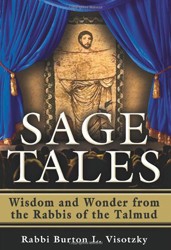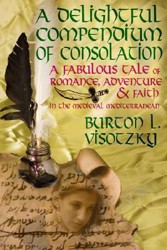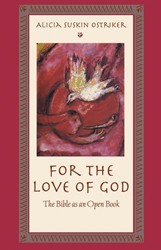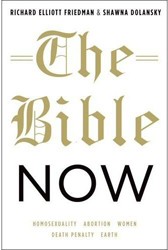In Aphrodite and the Rabbis: How the Jews Adapted Roman Culture to Create Judaism as We Know It, Burton Visotzky reconsiders the influence of Roman civilization on the rebirth of Judaism. Jewish tradition has positioned the Romans as the historic enemy of the Jewish people, both because of the destruction of the Temple and because of what Rabbinic Judaism characterized as Rome’s ongoing assault against Jewish culture. However, Aphrodite and the Rabbis argues that Judaism’s transformation into a world religion was in fact made possible by the Roman Empire.
A recognized scholar on Midrash, Visotzky opens this book with a story that draws readers into his search for Roman-Jewish cultural melding. Walking through the Jewish catacomb of Rome’s Villa Torlonia in 2007, the author sees first-hand the influence of Roman burial rites on the Jewish community of the Ancient Rome. “In short, what is now called ‘Judaism’ was invented in the matrix of Roman culture,” he writes. “Even as some rabbinic texts depicted Rome as the enemy, there is overwhelming evidence that Judaism took root in Roman soil, imbibed its nourishment, and grafted the good and pruned the bad from the Roman Empire, until a vibrant new religion — Judaism — arose from the wreckage of the Israelite religion and the Temple cult, nurtured by the very empire that had destroyed it.”
Aphrodite and the Rabbis supports this argument in ten chapters, each of which explores a particular influence of Roman culture had on Jewish life. In chapter five, Visotzky delves into the mixed message given by Rabbinic literature on the value of learning Roman rhetoric. Likening the study of Roman rhetoric to learning the language of one’s adopted country as a new immigrant, Visotzky argues that for the leadership of Rabbinic Judaism, the study of Roman rhetoric was an accepted and valued part of an education. In defense of this point, he draws parallels between a standard rhetorical form, the chreia, and rabbinic texts. For example, the well-known episode from the Babylonian Talmud (Shabbat 31a) — that of Hillel instructing a would-be convert while standing on one foot — is a Jewish interpretation of the philosophy of the celebrated rhetor Seneca in the form of a chreia.
Although the focus of this book is the intersection of Hellenic and Jewish culture, the author concludes by drawing a parallel between the Jews of Ancient Rome and American Jewry today. “If the rabbis and other Jews took the best of their Roman culture and heartily imbibed Hellenistic civilization as they invented a Judaism to survive the destruction of the Jerusalem cult, then it can be an encouragement for us to do the same,” suggests Visotsky. “Much as they swam in the waters of Greco-Roman culture, so we flourish in American society, transforming Judaism as we go.” With this, Aphrodite and the Rabbis is a book that teaches of the Judaism of the past, but encourages us to be proud and hopeful of it in the present — an important message from a book that is a scholarly, lively, and worthwhile read.
Related Content:
- György Spiró: Jesus’s Twin
- Jan Aronson: A Departure from the Traditional: The Bronfman Haggadah
- Darin Strauss: What We Believe





